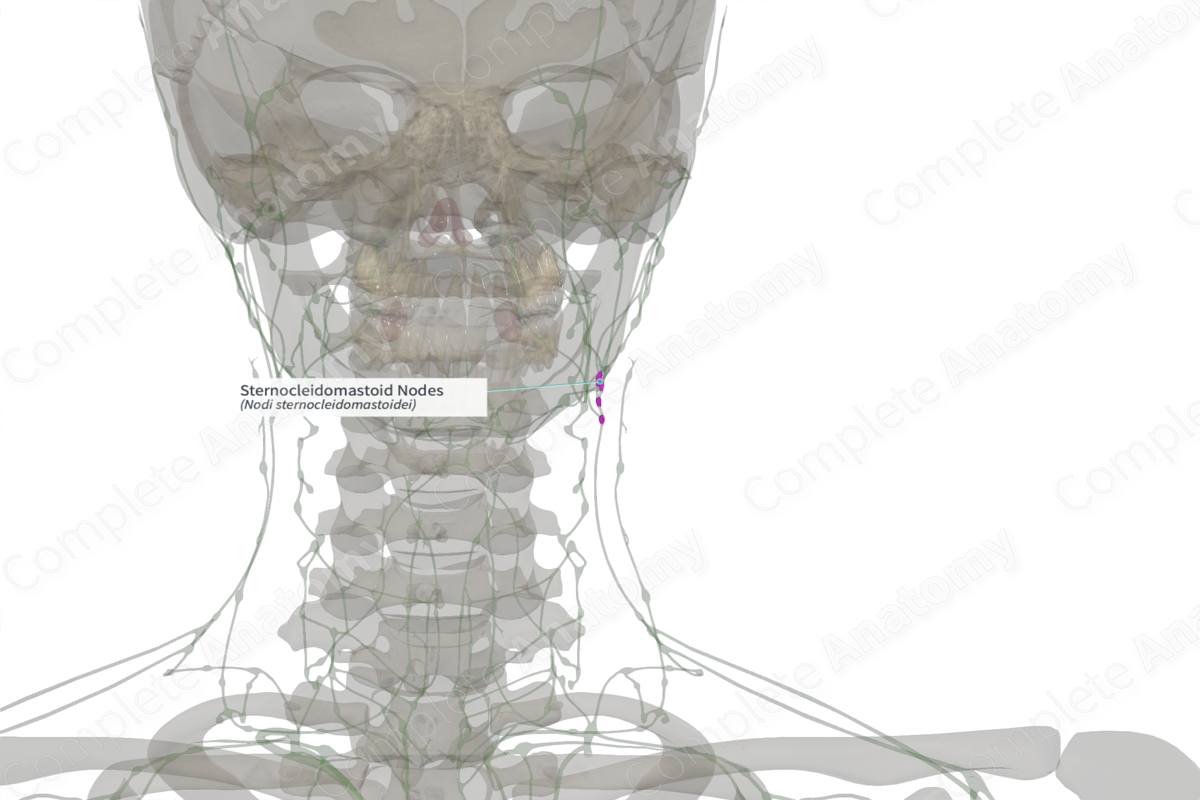
Quick Facts
Location: At the meeting point of the internal jugular and accessory chains, medial to sternocleidomastoid muscle.
Drainage: Occipital, retro-auricular, and parietal nodes; Direct drainage from the skin of the lateral and posterior neck and shoulder, the nasopharynx, oropharynx, and thyroid gland.
Direction of Flow: Supraclavicular nodes > jugular trunk > thoracic duct (left) or right lymphatic duct.
Related parts of the anatomy
Description
The nodes of the accessory chain are grouped by their location. The nodes at the most superior part of the chain, and tucked beneath sternocleidomastoid muscle, are known as the sternocleidomastoid nodes. The number of nodes here varies but is usually between two and ten.
The drainage territory for these nodes is wide and varied due to the fact that the accessory chain is a drainage pathway from most of the posterior head and neck. There are also deeper afferents coming from the viscera of the oropharynx and nasopharynx (Földi et al., 2012).
The efferent vessels draining these nodes connect to the subtrapezius nodes and the jugular trunk.
List of Clinical Correlates
—Metastatic deposits from malignancies of the nasopharynx, oropharynx, and thyroid
References
Földi, M., Földi, E., Strößenreuther, R. and Kubik, S. (2012) Földi's Textbook of Lymphology: for Physicians and Lymphedema Therapists. Elsevier Health Sciences.




